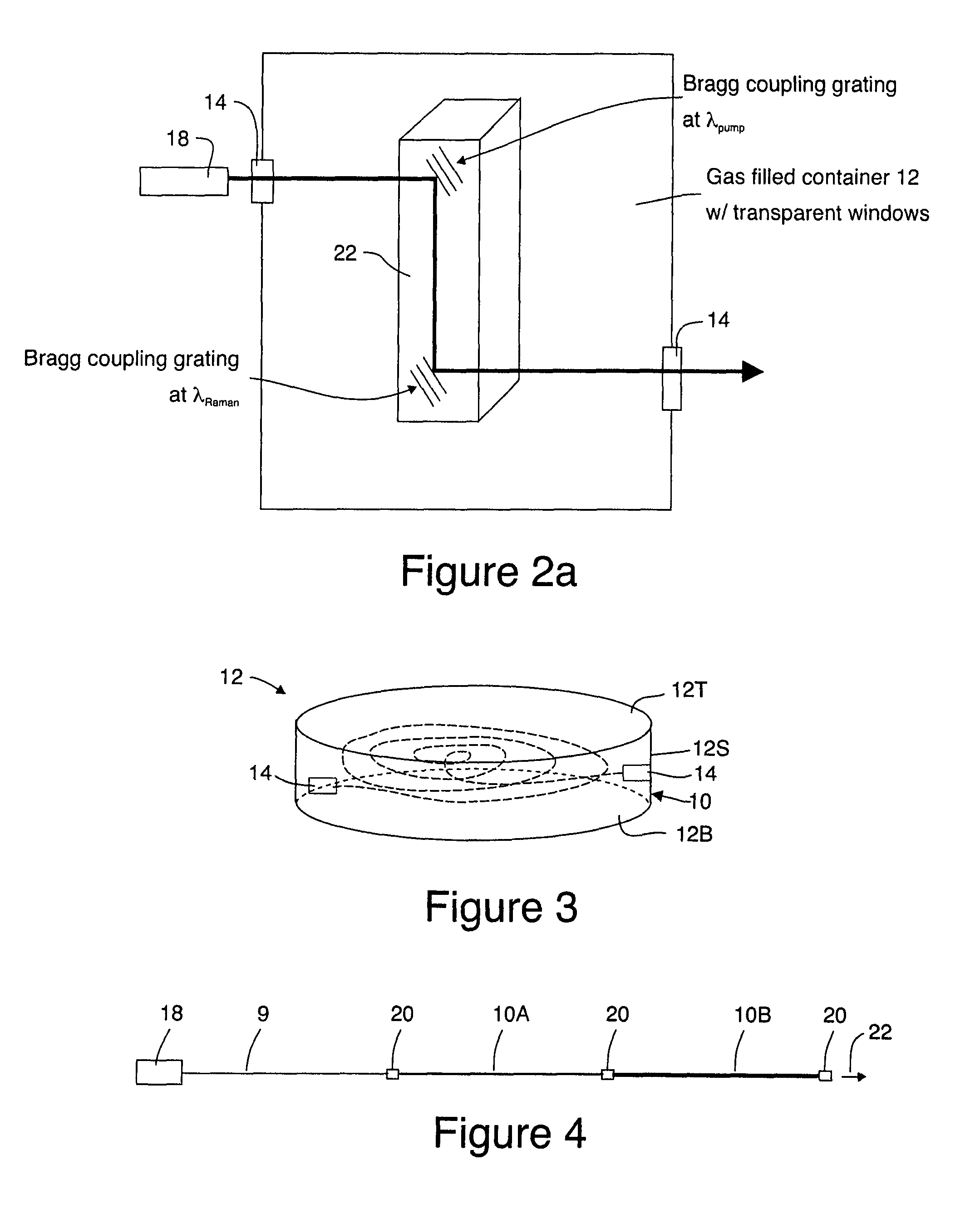Compact, tunable, efficient IR laser and IR guiding silica fibers
a technology of infrared laser and guiding silica fiber, which is applied in the field of compact, tunable, efficient infrared laser, can solve the problems of limiting such devices to doped glass cores and high-index liquids in lightpipes, nonlinear media have several limitations, and the approach is not very practical
- Summary
- Abstract
- Description
- Claims
- Application Information
AI Technical Summary
Problems solved by technology
Method used
Image
Examples
Embodiment Construction
[0027]In the following discussion we first describe gas-filled HC-PCFs as Raman shifters, which is a preferred embodiment. This is followed by a brief discussion of planar photonic crystal guided-wave structures, immersed in gas, as yet another embodiment to realize Raman shifting in a compact configuration.
Gas-Filled, Hollow-Core Photonic Crystal Fibers (HC-PCFs) as Raman Shifters
[0028]Although obviously not as compact as direct semiconductor sources, well-designed all-in-the-fiber lasers and HC-PCF SRS devices have few or no alignment-sensitive ordinary optics, have simple electronic infrastructure with no cryogenics, can be modulated with minimal loss in efficiency to provide optimal waveforms for myriad remote sensing applications, such as photo-acoustic detection, and are readily packaged, similar to ordinary electronics. We describe two different approaches herein, all involving Raman-induced wavelength conversion, from fiber lasers (such as a Ytterbium-doped fiber laser which...
PUM
 Login to View More
Login to View More Abstract
Description
Claims
Application Information
 Login to View More
Login to View More - R&D
- Intellectual Property
- Life Sciences
- Materials
- Tech Scout
- Unparalleled Data Quality
- Higher Quality Content
- 60% Fewer Hallucinations
Browse by: Latest US Patents, China's latest patents, Technical Efficacy Thesaurus, Application Domain, Technology Topic, Popular Technical Reports.
© 2025 PatSnap. All rights reserved.Legal|Privacy policy|Modern Slavery Act Transparency Statement|Sitemap|About US| Contact US: help@patsnap.com



